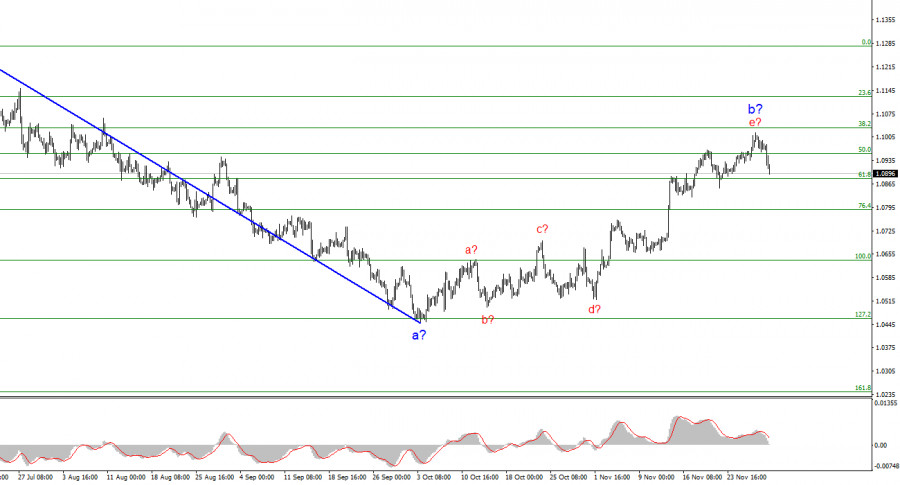
In the US, the latest inflation report showed a slowdown from 3.7% to 3.2%, but before that, the Consumer Price Index had been rising for three consecutive months. In the European Union, inflation unexpectedly approached the target level for many, so the ECB has the least reason to increase the interest rate. Based on this, the European currency should decline in the coming weeks and months, along with the British pound, as these two currencies rarely trade in different directions.
Fabio Panetta, one of the ECB's Board of Directors members, has confirmed the absence of the need to raise the interest rate. He stated today that the current interest rate corresponds to the target inflation. He also mentioned that the regulator may resort to easing monetary policy if the weakness in industrial production dampens consumer price growth. Panetta also believes that the effect of the monetary policy tightening program has yet to manifest itself fully, and further pressure on inflation can be expected through a decline in business and economic activity and a decrease in demand. Panetta separately stated that GDP in the fourth quarter in the European Union will remain weak.
Given all the above, the ECB is currently more inclined towards lowering the interest rate than raising it. And this is another reason for the European currency to fall. The British pound may have a different dynamic, as the inflation situation in the UK is somewhat different, but overall, I expect almost identical movements from both instruments.
Based on the analysis conducted, the formation of a bearish wave set continues. Targets around the 1.0463 level have been perfectly worked out, and an unsuccessful attempt to break this level indicated a transition to the construction of a corrective wave. Wave 2 or b has taken on a completed form, so I expect the construction of a downward impulse wave 3 or c with a significant decline in the instrument soon. I still recommend selling with targets located below the low of wave 1 or a. As long as wave 2 or b takes on a more prolonged form, selling should be cautious. A successful attempt to break the 1.0851 level could signal a decline in the instrument.
The wave pattern of the Pound/Dollar instrument suggests a decline within the descending trend segment. The maximum the British pound can count on is a correction. At this time, I recommend selling the instrument with targets located below the 1.2068 level because wave 2 or b must ultimately be complete and may end at any time. The longer it takes, the stronger the subsequent decline of the British pound will be. The narrowing triangle is a precursor to the completion of the movement.















 Download NOW!
Download NOW!
No comments:
Post a Comment